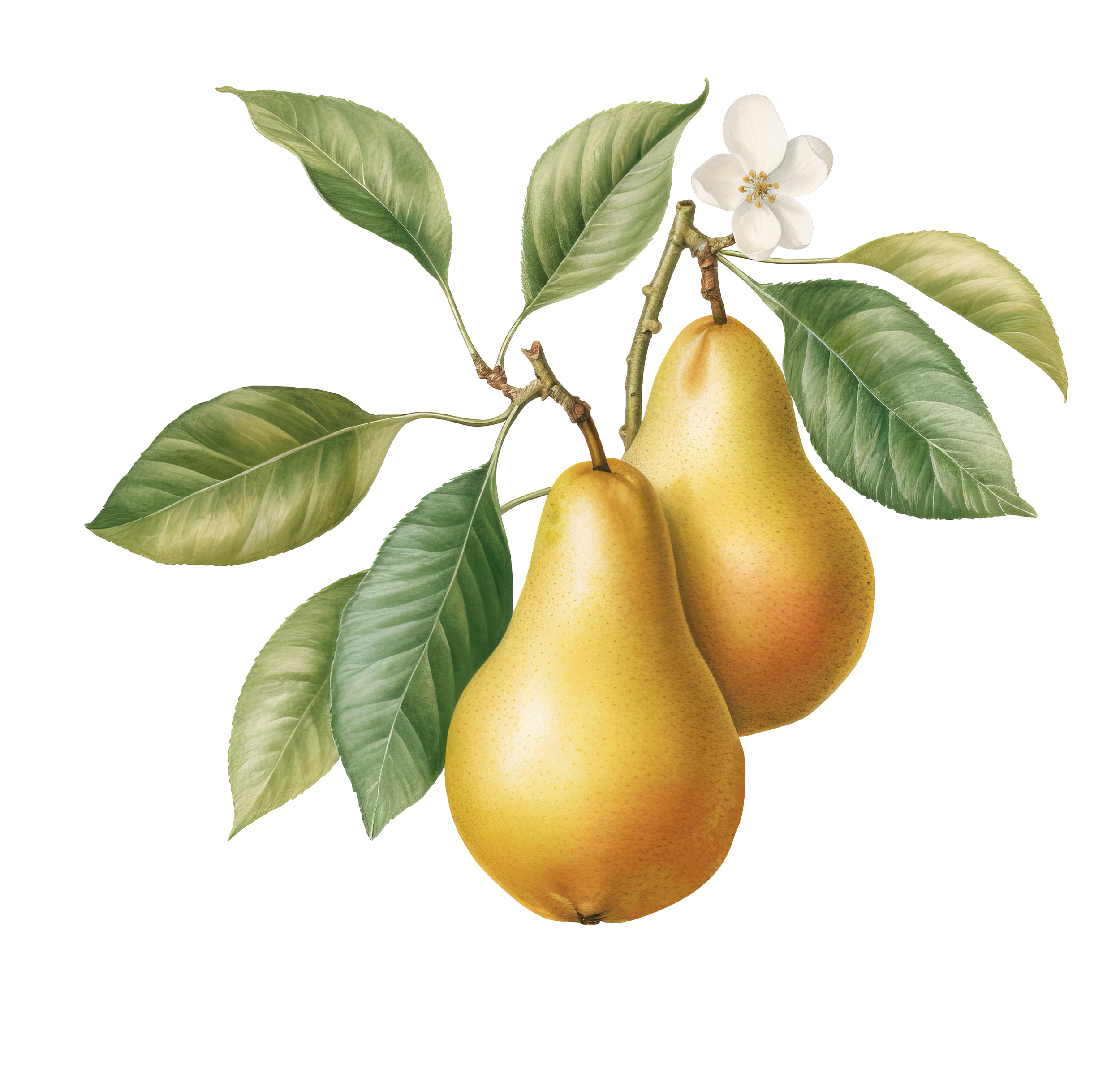
Fruit Trees
Pear Trees
Pears are perhaps the most under-appreciated fruit for backyard growers. Popular grocery store varieties (Barlett, Comice, Anjou etc.) will quickly succumb to fireblight in the humid Southeast, but other pears, including Asian pears, will thrive here if provided favorable growing conditions.
Our trees are grafted on to dwarfing and semi-dwarfing rootstock and will grow from 10-14ft.
European Pear Tree Types
-

Harrow Delight
Cherished for its exquisite fruit and ornamental beauty, this pear is bred for fireblight resistance. The fruit has excellent flavor and the tree is consistently productive so fruit will need to be thinned for optimal size. Harvested in late August, his pear is green-yellow with a red blush. Fruit should be picked while still green, as it has a strong tendency to drop as it ripens.
-
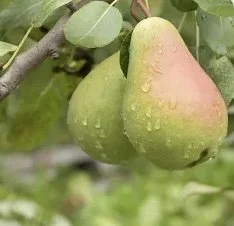
Honeysweet
Introduced by Purdue University because of its superior attributes for flavor, appearance and disease resistance. High quality ‘Seckel’ or ‘sugar’ pear type that is smooth, creamy and sweet as honey. Tree is a natural dwarf (10ft) and ripens in August. One of the few pears that are self-pollinating, but will yield larger crops when pollinated.
-
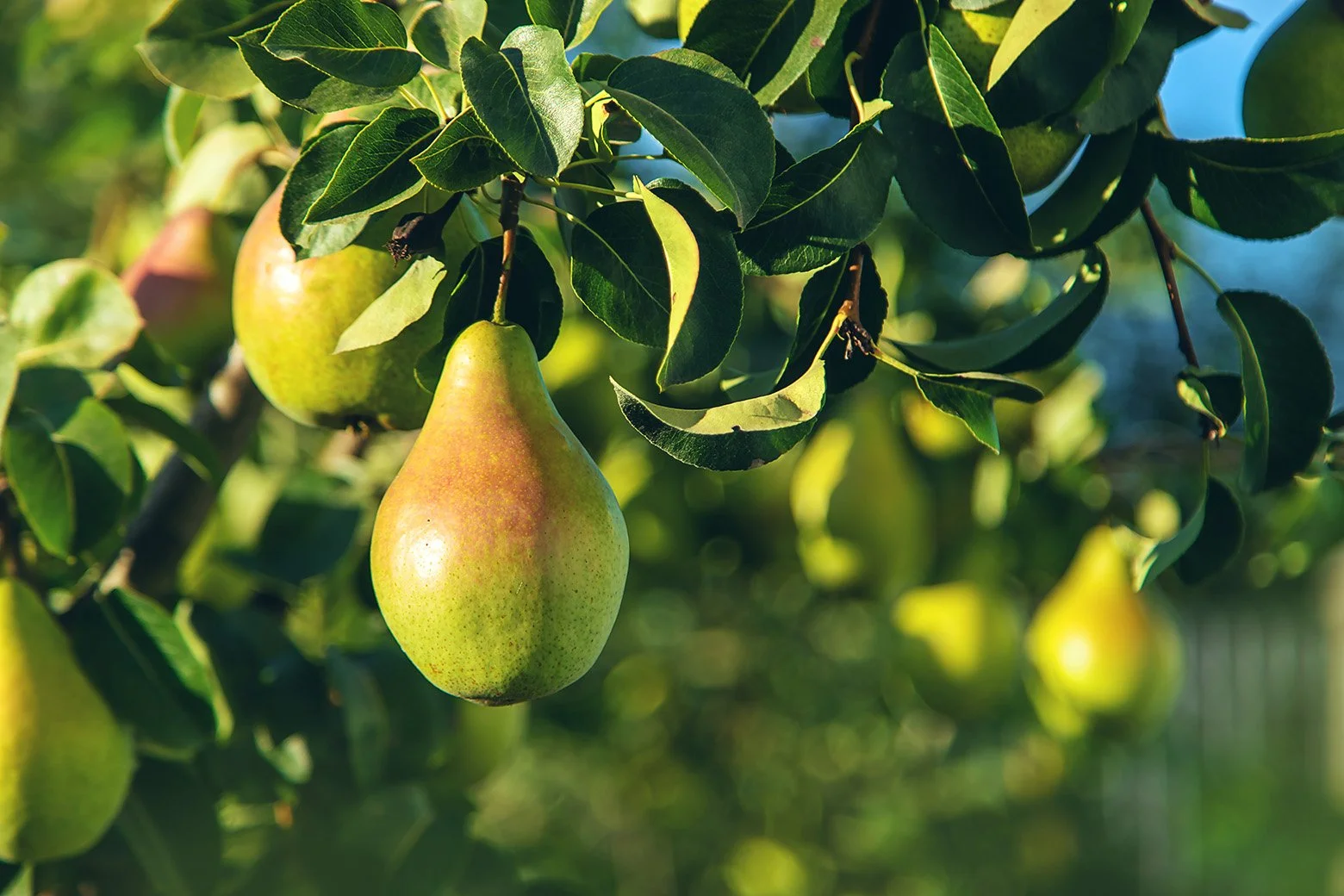
Magness
Easy to care for and disease resistant. Large, green fruit with a red blush. Known for its fine fresh eating quality with a texture that is rich and juicy. Bears sweet, perfumed fruit in late August. Its buttery melting flavor is similar in flavor to Comice. Can be pollinated by European or the Asian varieties, but will NOT pollinate others.
-
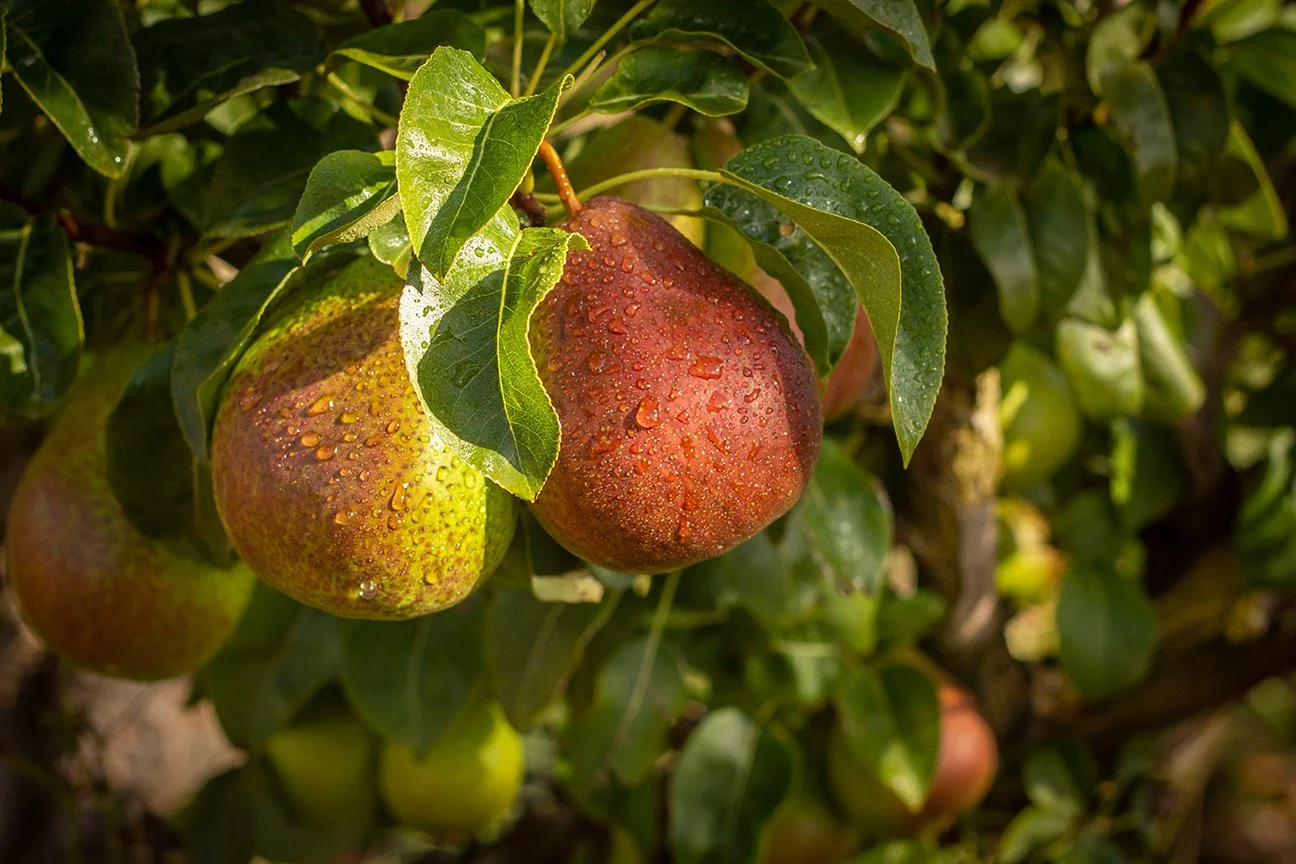
Moonglow
Large, blushed fruit draws attention, resembling the popular Bartlett pear. Its disease-resistant nature, particularly to fireblight, ensures the tree’s longevity and consistent fruit-bearing capacity. Notably, the Moonglow Pear serves as an effective pollinator for various pear varieties, adding to its practical value. Moonglow pears can be enjoyed fresh, as well as used in cooking, canning, and freezing to preserve your harvest.
-
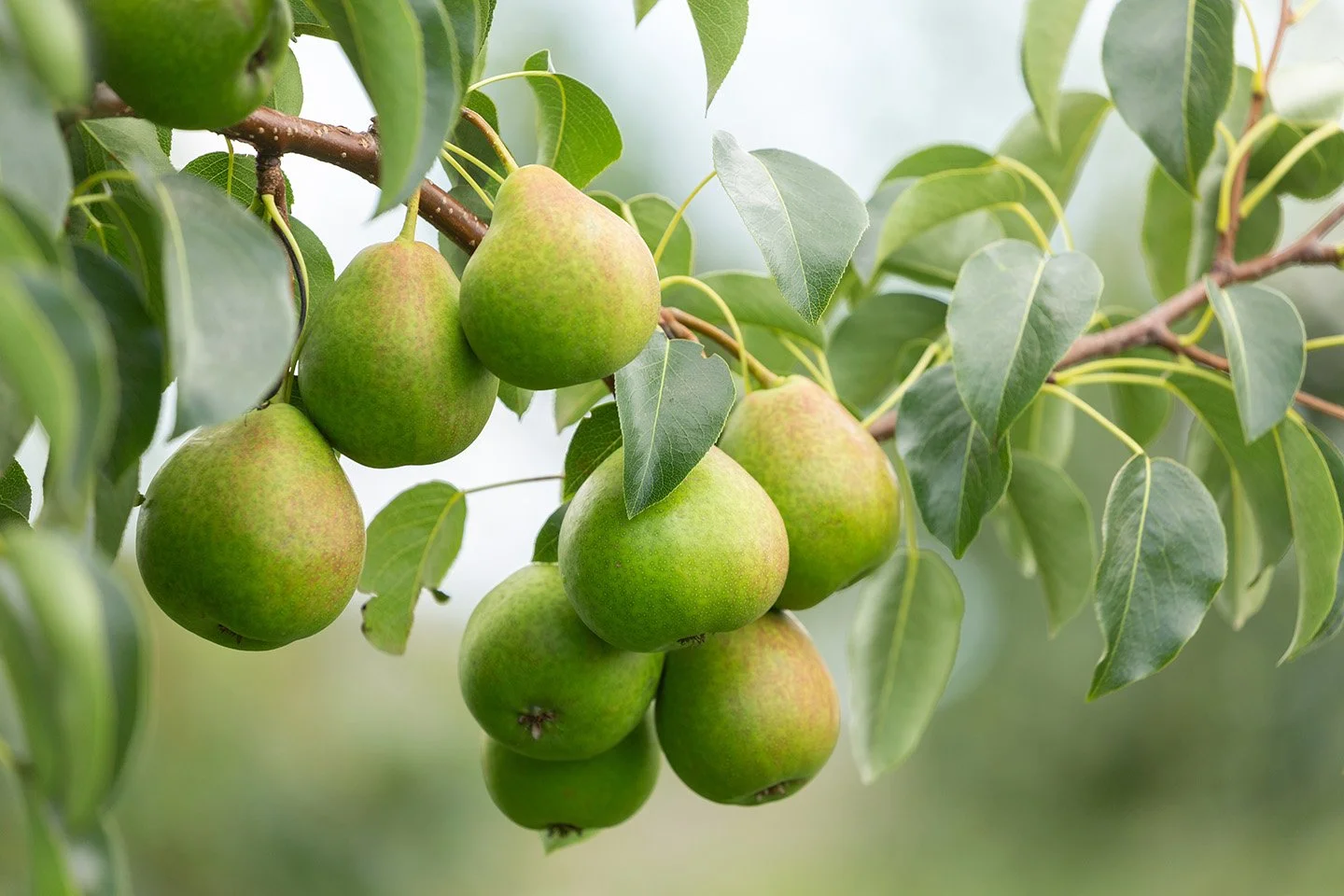
Orient
Not to be confused with Asian pears, the Orient is a domestic variety named because of its large round shape that is similar to that of Asian pears. The pears have yellow skin with smooth textured, sweet, firm, juicy, white flesh. It is resistant to fireblight and is a heavy producer in August. The Orient pear does best with a pollinator such as Magness, Moonglow, Potomac or Warren.
-
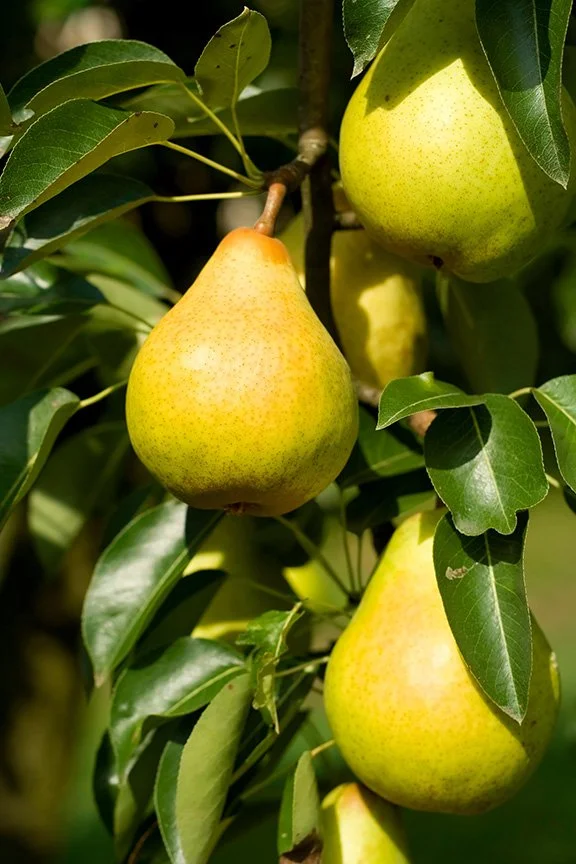
Potomac
A modern, fireblight-resistant pear of the highest quality. An excellent choice for home orchards, it is vigorous and precocious. A cross between Moonglow and Anjou, the skin is glossy green and the flesh is fine, aromatic, and buttery. A subtle acid tang balances the sweetness. Potomac pears ripen in September and will store for up to ten weeks. Potomac is not self-fertile, and it will need a pollination partner.
-
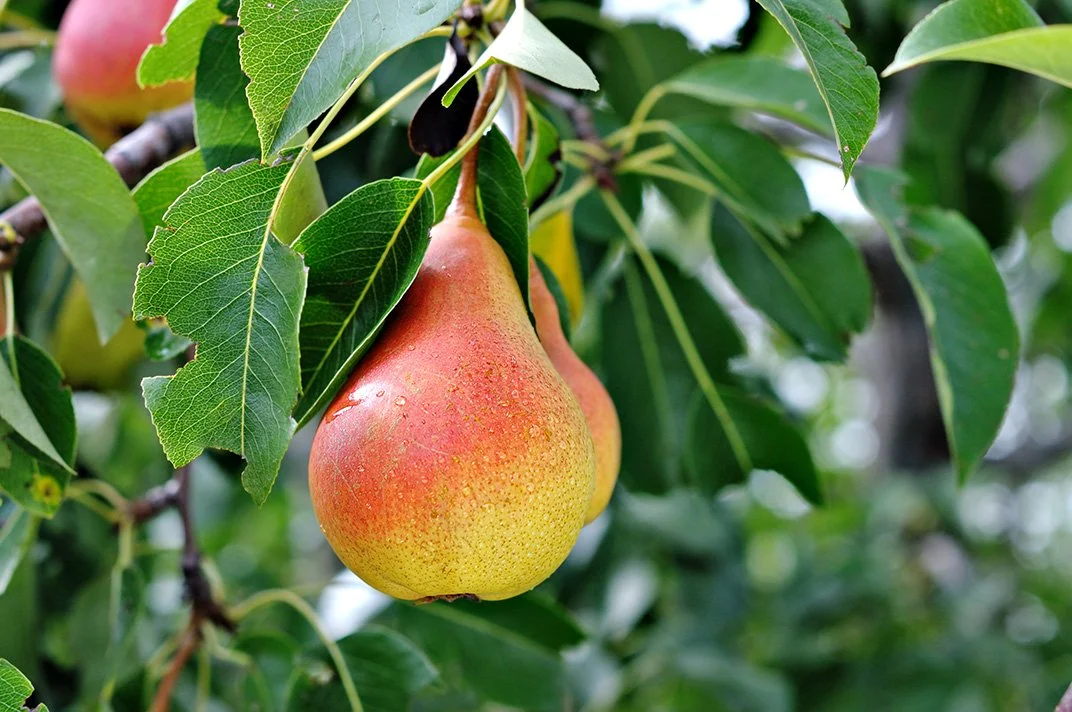
Warren
Excellent quality dessert pear and among the very best for Southern backyard growers. Fruit is juicy and sweet with a buttery texture and good keeping ability. Medium to large in size with a teardrop shape and light green in color. Extremely cold-hardy and resistant to fireblight. Requiring 600 chill hours. Considered a "Universal Pollenizer" but also self-fertile. Ripens in September.

